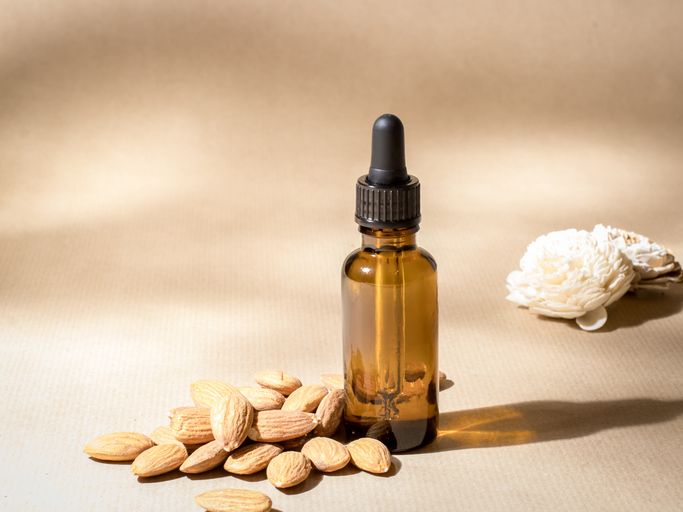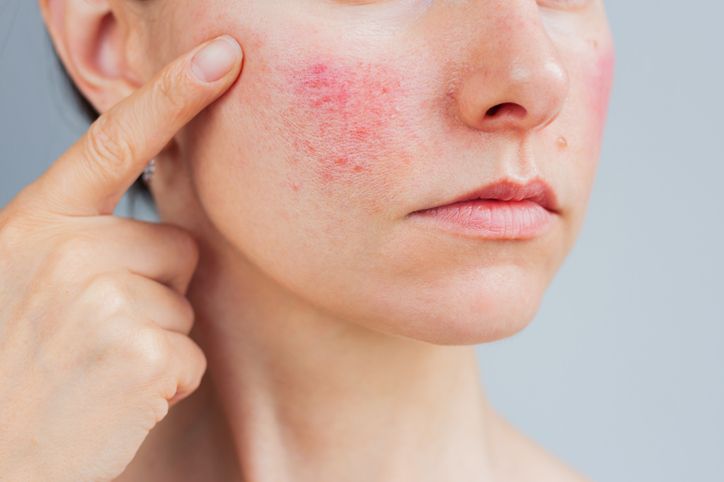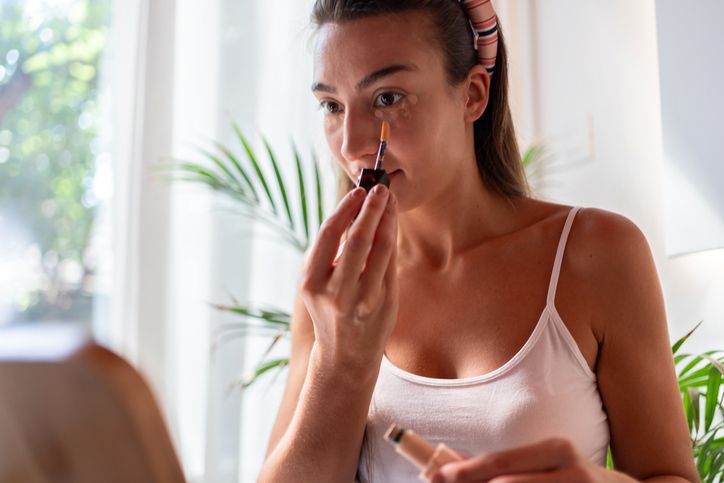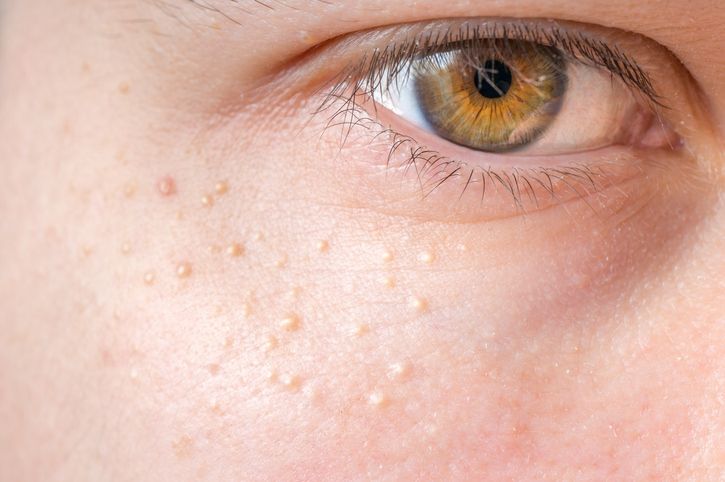- Home
- Trend
- Weight Loss Strategies
- Acne Tips
- Hair Health Information
- Blemish Removal Tips
- Acne Scar Removal Tips
- Muscle Building Techniques
- Intimate Care Tips
- Postpartum Intimate Care
- Eye Bags Wiki
- Tips for Face Slimming
- Secret of Permanent Hair Removal
- Breast Enlargement Tips
- Cure to Snoring
- Marionette Lines
- Skin-Tightening Secrets
Have you recently noticed that your arms have become thicker or flabbier, seemingly out of nowhere? Sudden arm fat gain can be frustrating, especially when it appears unexpectedly and feels resistant to your usual diet and exercise efforts. Here, we explore five common reasons behind sudden arm fat gain and what you can do to address it.
Problem Areas 101: Arm Fat Types
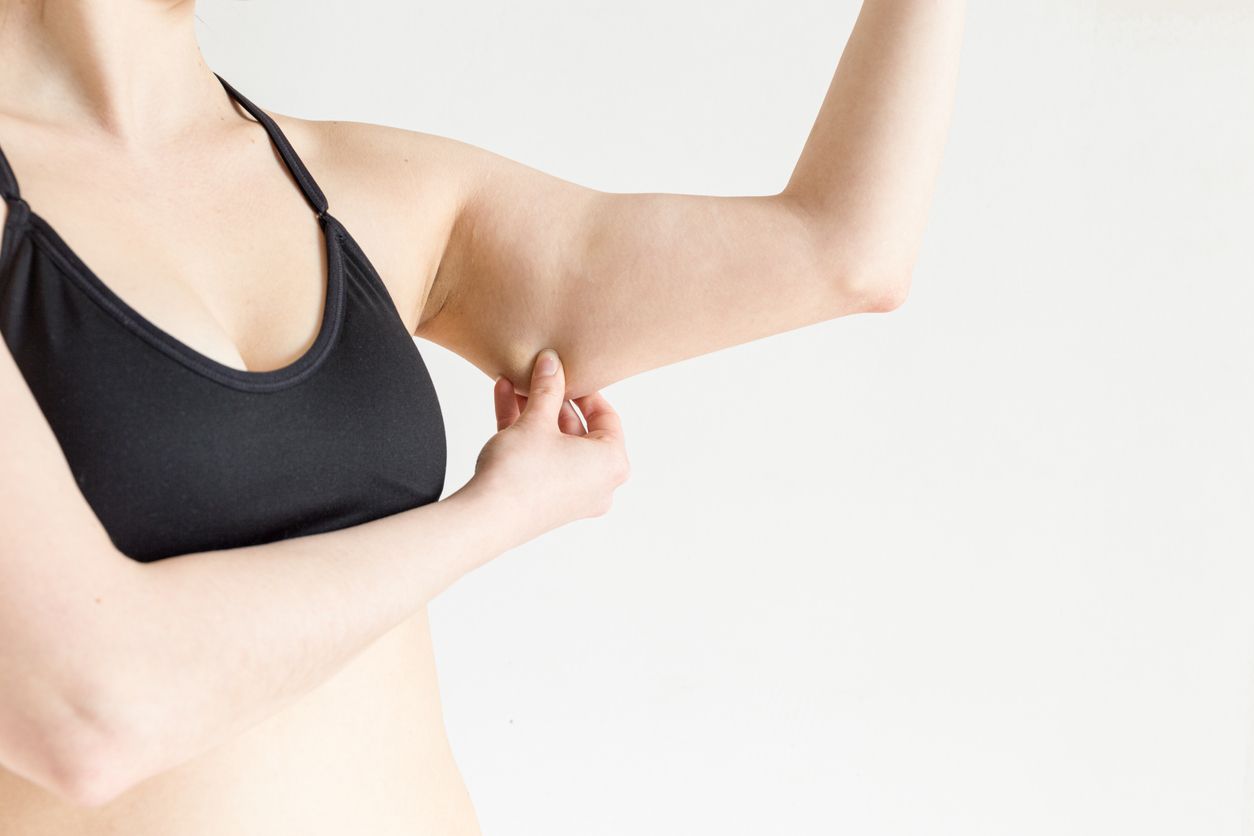
Arm fat can be classified into several categories based on its location, underlying causes, and the characteristics of the fat deposits. To identify the most effective methods to reduce or manage arm fat, it’s important to understand the specific type of sudden arm fat you are experiencing. Here’s a closer look at the main types of arm fat:
Subcutaneous Fat
Subcutaneous fat is the layer of fat that lies directly beneath the skin. This is the most visible form of arm fat and is often responsible for the appearance of flabby or less-toned arms. Subcutaneous fat is generally soft and can be pinched between your fingers.
It tends to accumulate in areas like the upper arms, particularly in women, where it can contribute to what’s commonly known as "bat wings." This type of fat is relatively easier to lose compared to other types of fat, but it still requires consistent effort through diet and exercise to reduce.
Visceral Fat
Visceral fat is more commonly associated with fat that surrounds internal organs in the abdominal cavity, but it can also be linked to overall fat distribution throughout the body, including the arms. While visceral fat itself isn’t directly visible in the arms, excess amounts can indicate a higher risk of fat deposits in various areas, including the upper arms.
Visceral fat is more dangerous than subcutaneous fat because it’s associated with a higher risk of health issues like heart disease and diabetes. However, targeting visceral fat often leads to a reduction in overall body fat, including the arms.
Localised Fat Deposits
Localised fat deposits are stubborn pockets of fat that are concentrated in specific areas, such as the back of the arms (triceps area). These deposits are particularly challenging to reduce through diet and exercise alone and often require a more targeted approach, such as strength training or advanced treatments like a body sculpting treatment.
Localised fat is usually more resistant to traditional weight loss methods because it can be influenced by genetics, making certain areas of the body more prone to fat accumulation.
Hormonal Fat
Hormonal changes play a significant role in the distribution of fat in the body, particularly in women. Hormonal fat in the arms can result from fluctuations in hormones like oestrogen and testosterone.
For example, low levels of testosterone or changes in oestrogen levels during menopause can lead to an increase in fat storage in the upper arms. This type of fat is often more difficult to manage because it’s not just about calorie intake; it’s also tied to the body’s hormonal balance, requiring a more comprehensive approach that may include medical consultation, lifestyle changes, and specific exercises.
Age-Related Fat
As people age, the body undergoes various changes that can lead to an increase in body fat, including in the arms. Age-related fat accumulation is often accompanied by a loss of skin elasticity and muscle mass, making the arms appear flabbier. This type of fat tends to be more difficult to lose because it’s not just about the fat itself; the decline in muscle mass means there’s less muscle tone to give the arms a firm appearance.
Additionally, the skin’s ability to retract diminishes with age, leading to sagging. Addressing age-related fat often requires a combination of strength training to build muscle and skin-tightening treatments to improve the skin’s elasticity.
Understanding the different types of arm fat can help you tailor your approach to reducing it, whether through specific exercises, dietary adjustments, or advanced treatments designed to target and eliminate stubborn fat.
How to Measure Arm Width?
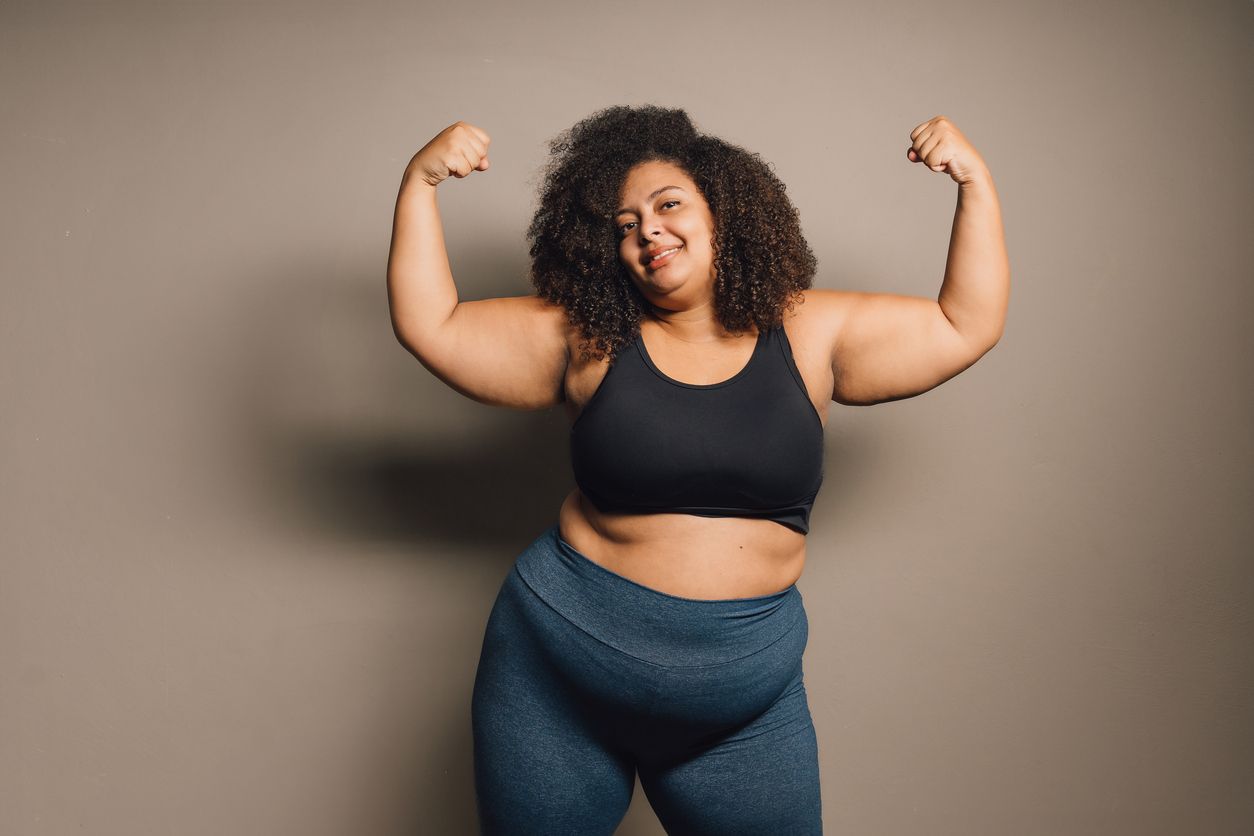
Aside from arm fat type, measuring arm fat can help you track changes in body composition and gauge the effectiveness of your fitness and dietary efforts. Here are a few methods you can use to measure arm fat:
Skinfold Calipers
Skinfold callipers are a popular tool for measuring body fat, including arm fat. They work by pinching the skin and underlying fat at specific sites on the body to measure the thickness of the fat layer.
How to Measure:
• Triceps Measurement: This is the most common site for measuring arm fat. Stand with your arm relaxed at your side. Use the calliper to pinch the skin and fat halfway between the elbow and the shoulder on the back of your arm (triceps).
• Take multiple measurements to ensure accuracy and calculate the average.
Note: Skinfold measurements should ideally be performed by a trained professional to ensure accuracy.
Body Circumference Measurements
Measuring the circumference of your upper arm can provide an indication of changes in arm size, which may reflect changes in fat and muscle mass.
How to Measure:
• Use a flexible measuring tape.
• Wrap the tape around the largest part of your upper arm, usually midway between your shoulder and elbow.
• Keep the tape snug but not too tight, and ensure it's level around the arm.
• Record the measurement and track it over time to monitor changes.
Body Fat Percentage Scales
Some body fat scales use bioelectrical impedance analysis (BIA) to estimate body fat percentage, including in the arms. While these scales provide a general estimate of body fat, they may not be as accurate for specific body parts like the arms.
How to Measure:
• Stand on the scale with bare feet.
• Some scales may have hand grips to provide a more detailed analysis of upper body fat.
• Follow the manufacturer’s instructions to get a reading of your overall body fat percentage, which can help you infer changes in arm fat over time.
Visual Assessment and Progress Photos
Taking regular photos of your arms and visually assessing them can help you track changes in arm fat over time. While not as precise as other methods, visual assessments can be motivating and provide a practical way to monitor progress.
How to Measure:
• Take photos from the same angle and distance each time, under similar lighting conditions.
• Compare photos over weeks or months to observe changes in the size and shape of your arms.
DEXA Scan (Dual-Energy X-ray Absorptiometry)
A DEXA scan is a more advanced and highly accurate method for measuring body fat distribution, including arm fat. It uses low-dose X-rays to differentiate between bone mass, lean tissue, and fat.
How to Measure:
• A DEXA scan requires a visit to a medical facility or specialised clinic.
• The scan will provide a detailed breakdown of fat distribution across your body, including the arms.
Note: This method is typically more expensive and is often used for medical or research purposes.
免費體驗
1 Minute Self-Registration
Date should not be before minimal date
5 Possible Answers Behind Fat Arms
After understanding the type of arm fat you have, here are a few reasons why you may have suddenly experienced arm fat:
1. Weight Fluctuations and Fat Distribution
Sudden changes in your overall body weight can lead to fat accumulation in specific areas, such as the arms. Weight gain, whether due to increased caloric intake, a sedentary lifestyle, or other factors, can cause fat to be stored in the upper arms.
This is often more noticeable in people whose bodies tend to store fat in this region. Even minor fluctuations in weight can lead to noticeable changes in the appearance of your arms.
What to Do: To combat this, focus on a balanced diet and regular exercise to maintain a healthy weight. Incorporating cardio and strength training exercises, like push-ups and tricep dips, can help tone your arm muscles and reduce fat in the upper arms.
2. Hormonal Changes
Hormonal imbalances can lead to sudden fat gain in specific areas of the body, including the arms. For women, fluctuations in hormones due to menopause, pregnancy, or even changes in birth control methods can cause the body to store fat in areas where it previously did not. Men may also experience hormonal shifts that affect fat distribution, although this is less common.
What to Do: If you suspect hormonal changes are contributing to fat gain, consult with a healthcare professional. They can help you understand your hormone levels and recommend lifestyle changes or treatments to manage the effects.
3. Age-Related Muscle Loss
As you age, your body naturally loses muscle mass, a condition known as sarcopenia. This loss of muscle mass can make it easier for fat to accumulate in areas like the arms, especially if you’re not engaging in regular strength training exercises. Reduced muscle mass can also slow down your metabolism, making it easier to gain fat.
What to Do: To counteract muscle loss, incorporate strength training exercises into your routine. Focus on exercises that target the arms, such as bicep curls and tricep extensions, to build muscle and improve the appearance of your arms.
4. Poor Diet and Lack of Exercise
A diet high in unhealthy fats, sugars, and processed foods can contribute to fat gain, including in the arms. Combined with a lack of exercise, this can lead to an increase in body fat percentage and a decrease in muscle tone, making your arms appear flabby.
What to Do: Adopt a balanced diet rich in lean proteins, healthy fats, and plenty of fruits and vegetables. Regular exercise, including both cardio and strength training, is essential for reducing overall body fat and toning your arms.
5. Stress and Lack of Sleep
Chronic stress and insufficient sleep can lead to hormonal imbalances that promote fat storage, particularly in areas like the arms. High levels of cortisol, a stress hormone, have been linked to increased fat accumulation and weight gain.
What to Do: Managing stress through relaxation techniques, adequate sleep, and physical activity can help reduce cortisol levels and prevent fat gain. Ensure you’re getting at least 7-8 hours of quality sleep each night to support overall health and weight management.
S6 Body Sculpting Treatment V.S Your Arm Fat
To tackle these reasons, we introduce S6 Body Sculpting Treatment from Perfect Medical, a non-ablative procedure, meaning it doesn't involve any cutting, burning, or removal of tissue. This makes it a safe and effective option for those looking to reduce stubborn arm fat without the risks and downtime associated with surgical procedures.
The treatment uses advanced bio-laser technology, which penetrates the skin's surface to target fat cells without damaging the surrounding tissues. This precision allows for focused fat reduction in the upper arms, where fat can be particularly difficult to lose through diet and exercise alone.
S6 Body Sculpting Treatment免費體驗
1 Minute Self-Registration
Date should not be before minimal date
FAQ

1. Why might I have excess fat in my arms even when I’m losing weight?
Excess fat in the arms, despite efforts to lose weight, can be influenced by several factors. One common reason is genetic predisposition, which affects how and where your body stores fat. Additionally, hormonal imbalances, such as low testosterone levels, can contribute to fat accumulation in the arm area. Incorporating strength training exercises to build muscle and focusing on overall body fat reduction can help address this issue.
2. How can building muscle help reduce fat in the arm area?
Building muscle in the arms can help reduce fat in the arm area by increasing your overall metabolism. When you engage in strength training exercises, such as weightlifting, you build muscle mass. This increased muscle mass burns more calories even at rest, which aids in reducing excess fat. Combined with a balanced diet and regular cardiovascular exercise, building muscle can be an effective strategy to lose weight and target stubborn arm fat.
3. What role does testosterone play in arm fat accumulation?
Testosterone plays a significant role in regulating fat distribution and muscle mass. Low levels of testosterone can contribute to increased fat accumulation in areas such as the arms. This hormonal imbalance can make it more challenging to lose weight and reduce arm fat. Addressing low testosterone levels through medical consultation, along with a balanced diet and strength training, can help manage and reduce excess arm fat.
4. How does gaining weight affect the amount of fat in the arms?
Gaining weight can lead to increased fat deposits in the arms, as excess calories are stored throughout the body. When you gain weight, fat accumulation occurs in various areas, including the arms. This is often due to an imbalance in caloric intake versus expenditure, leading to the storage of excess fat. To address this, it's crucial to implement both dietary adjustments and exercise routines focused on reducing overall body fat.
5. Can excess arm fat be caused by factors other than weight gain?
Yes, excess arm fat can be caused by factors beyond weight gain. Hormonal changes, such as fluctuations in testosterone and oestrogen levels, can influence fat distribution, including in the arms. Additionally, ageing can lead to changes in skin elasticity and muscle mass, resulting in more noticeable arm fat. Lifestyle factors like poor diet and lack of exercise can also contribute to fat accumulation in the arm area.





